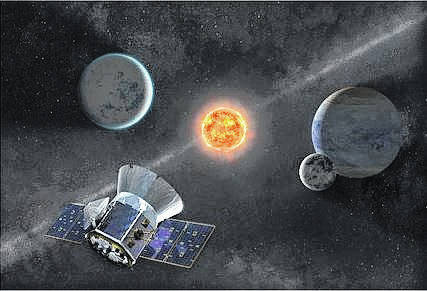If you stand in front of the old planetarium building in front of Planetarium Road, you’ll see something painted on the sidewalk; eight dutifully labelled dots of differing size — all scaled out properly from the sun at the street — all the way to the doorway.
There was a ninth dot there in case more data confirms what many of you already believe, that Pluto, too, was a planet.
Let’s have at it regarding Pluto, shall we?
I use what “happened” to Pluto as a way to teach students about how modern science works. When confronted with additional information, sometimes it’s necessary to revamp and reclassify what we thought we knew. In biology, for example, students at one time were taught that all animal life could be divided into three main classes: those that walked/crawled, those that swam and those that could fly. This was Aristotle’s effort to classify living things. Aristotle was a great thinker in many areas. Science wasn’t one of those, as it turns out.
What happened to Pluto, its reclassification as a dwarf planet, is not a new thing. Back in the 19th century, many new objects were discovered orbiting the sun, Ceres, Vesta, Pallas to name three. In the mid-19th century these were all reclassified as well, becoming a collective known as asteroids. So when new, sometimes larger, objects were discovered in the same area of the solar system as Pluto, these became collectively known as Kuiper belt objects. And that happens all of the time in science.
One reason why I love teaching about space is that the information is still coming, still being found. The astronomy I was teaching in 1990 has been radically reformed by new information that is occurring while you are reading this.
Let’s get back to the title question: How many planets are there? The answer — as of this writing — at least 3,779, and counting. This information is courtesy https://exoplanets.nasa.gov/ and will no doubt grow larger. Telescopes and the hardware to process their light are always improving. As they improve, more data will be available for us to process.
One relatively new player in this game of finding planets orbiting other stars is TESS — the Transiting Exoplanet Survey Satellite. TESS is specifically designed to scan the starry skies looking for planets blocking out a small portion of the light from their parent stars. You can demonstrate what TESS’ optical system does by blocking a bulb’s light with a pencil lead or pen tip held at arm’s length. You’ll be able to dim the bulb — not much — but you’ll be able to see the transit effect clearly. That’s what TESS’ optics will do with most of the stars of the night sky, in both hemispheres. NASA launched TESS in April aboard a SpaceX Falcon 9. TESS has already found two new exoplanet candidates, and will probably discover thousands more before it is done. For more information about TESS, go to NASA’s mission page: https://www.nasa.gov/tess-transiting-exoplanet-survey-satellite
If you want to get some of the raw data from these exoplanet discovery missions and analyze it for yourself, planethunters.org is where you should go. There you’ll be taught how to read a stellar light curve graph, label the transits in that curve and report your discovery to the scientific community. You could easily be one of the first people to see a new planet. Many stellar light curves are still waiting to be analyzed from the older Kepler exoplanet telescope mission, and it turns out that the human brain is still better at interpreting these images than any computer algorithm developed so far. This is one of many chances for you to do what’s called citizen science — analyzing real data from actual scientific missions of discovery.
I imagine a supper conversation that includes “I discovered a planet today; what did you do?”










